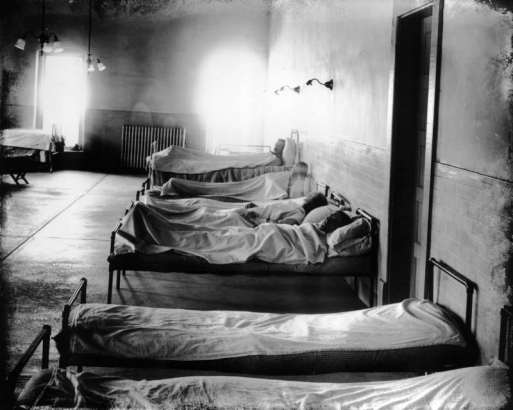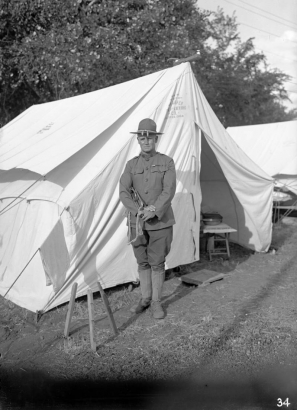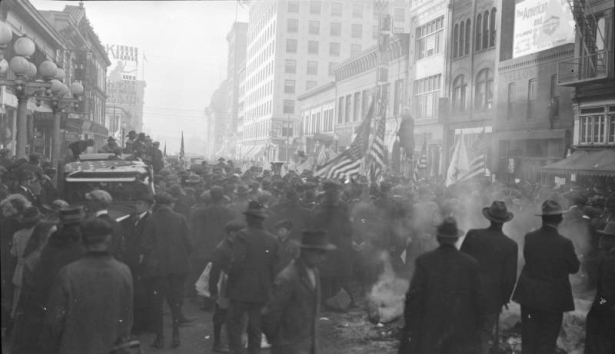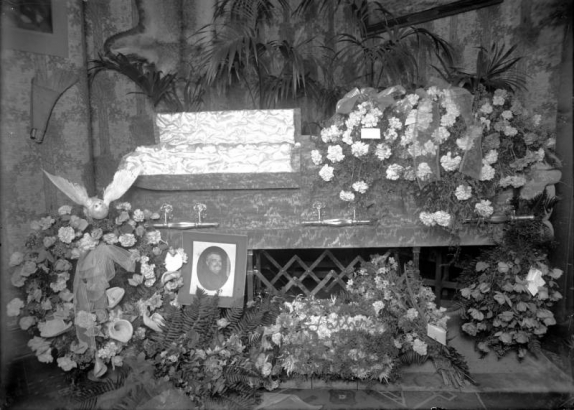In 1918, a powerful strain of influenza (nicknamed “Spanish Flu” and “La Grippe”) spread swiftly throughout the world. The virus proved to be deadly, often bringing on pneumonia that filled its victims’ lungs with fluid. Worldwide, it is estimated that between 21 and 50 million people (many of them adults in their 20s and 30s) died from the flu in 1918 and 1919.
"Spanish Flu” was first reported in Colorado on September 21, 1918, among the Student Army Training Corp stationed at the University of Colorado in Boulder. Hundreds of soldiers were sickened and 19 died. Between September 1918 and June 1919, nearly 8,000 Coloradans died from influenza and its complications.
The flu in 1918 was technically a pandemic (rather than an epidemic) as it spread quickly and affected a large number of people across several continents. In Denver, Colorado Springs, and towns throughout the state, officials tried to control the spread of the virus by encouraging the use of face masks and placing restrictions on public gatherings.
"In Denver, drastic measures were taken before the disease reached her. All places of amusements, churches, and schools were closed, and a ban was placed upon all meetings where people congregated...During the latter part of the epidemic when our force had more time in which to investigate conditions, it was found that the greater spread of the disease was due to visitors in sick rooms and infected houses...The placarding of houses and rigid quarantine, which at the present time is in force, is lessening the danger somewhat."
- Sharpley, Dr. W.H., "Influenza Epidemic," Municipal Facts, November 1918, volume 1, number 9, page 18
In her autobiography manuscript available in DPL’s Western History and Genealogy Department (C MSS -M1013), Nova Eisner Rose recounts how her family was tragically affected by the pandemic in Weld County:
Father caught it. Mother took a leave of absence [from teaching at Denver’s Whittier School] and went up to nurse him, but she herself became so tired she then sent for me to come from my college freshman year and relieve her. The second day after I arrived, Father died of a massive hemorrhage. His body was taken to Denver for burial, but the day of the funeral I couldn’t raise my head from the pillow. People avoided gatherings in those days, so Mother alone saw my Father buried.
A more complete story of the Influenza Pandemic of 1918 in Colorado can be found in the Western History and Genealogy Department with the following resources:
- Western History Subject Index (index to the local newspapers)
- Denver Municipal Facts (check out page 483 and 484 of the Denver Municipal Facts Index)
- Denver Public Library 1918 And 1919 Flu Obituary Index: Rocky Mountain News And Denver Post)
- Influenza Encyclopedia: Denver (online resource produced by the University of Michigan Center for the History of Medicine and Michigan Publishing)






Comments
Hi Thomas,
Hi Thomas,
I read that article in the NY Times as well, in which Brian Zecchinelli mentions a Spanish flu plaque in Colorado. I have yet to find where this plaque is. I will update this thread if I find the answer. Thanks for reading, Thomas!
My grandfather was with a
My grandfather was with a group from Olathe at CU during that time period for military training. Don’t know if any of them contracted the flu, but after a genealogy search, appears all lived through this time period.
Glad the Olathe group made it
Glad the Olathe group made it through. Thanks for reading and sharing!
My father was born in Denver…
My father was born in Denver in 1918 and my mother in 1916. I have always wondered how they survived along with my Father’s very large family of 62 cousins! Covid was my experience and wish I could ask them how it was that they all survived.
Add new comment